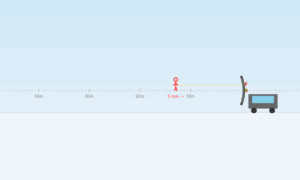Lens Disappearance Simulation
1.33
1.47
1.60
1.40
1.47
1.70
Water
Glycerine
Ethanol
Cedar Oil
1/f = (nlens/nliquid - 1)(1/R1 - 1/R2)
Example
Question:
A magician during a show makes a glass lens with \( n = 1.47 \) disappear in a trough of liquid. What is the refractive index of the liquid? Could the liquid be water?
Solution:
The refractive index of the liquid must be equal to 1.47 (i.e., \( n_1 = n_2 \)) to make the lens disappear. This makes \( 1/f = 0 \) or \( f \rightarrow \infty \). The lens in the liquid acts like a plane sheet of glass. The liquid is not water; it could be glycerine.
Index Matching Explanation
When a lens is immersed in a liquid with the same refractive index:
- The lens becomes invisible because light doesn't bend at the interfaces
- The lens formula shows 1/f = 0, meaning f → ∞ (no focusing power)
- The lens acts like a flat sheet of glass with parallel surfaces
This principle is used in microscopy (index matching oils) and magic tricks (as in this example). Water (n=1.33) won't make a glass lens (n≈1.5) disappear, but glycerine (n=1.47) can for specially made lenses.



